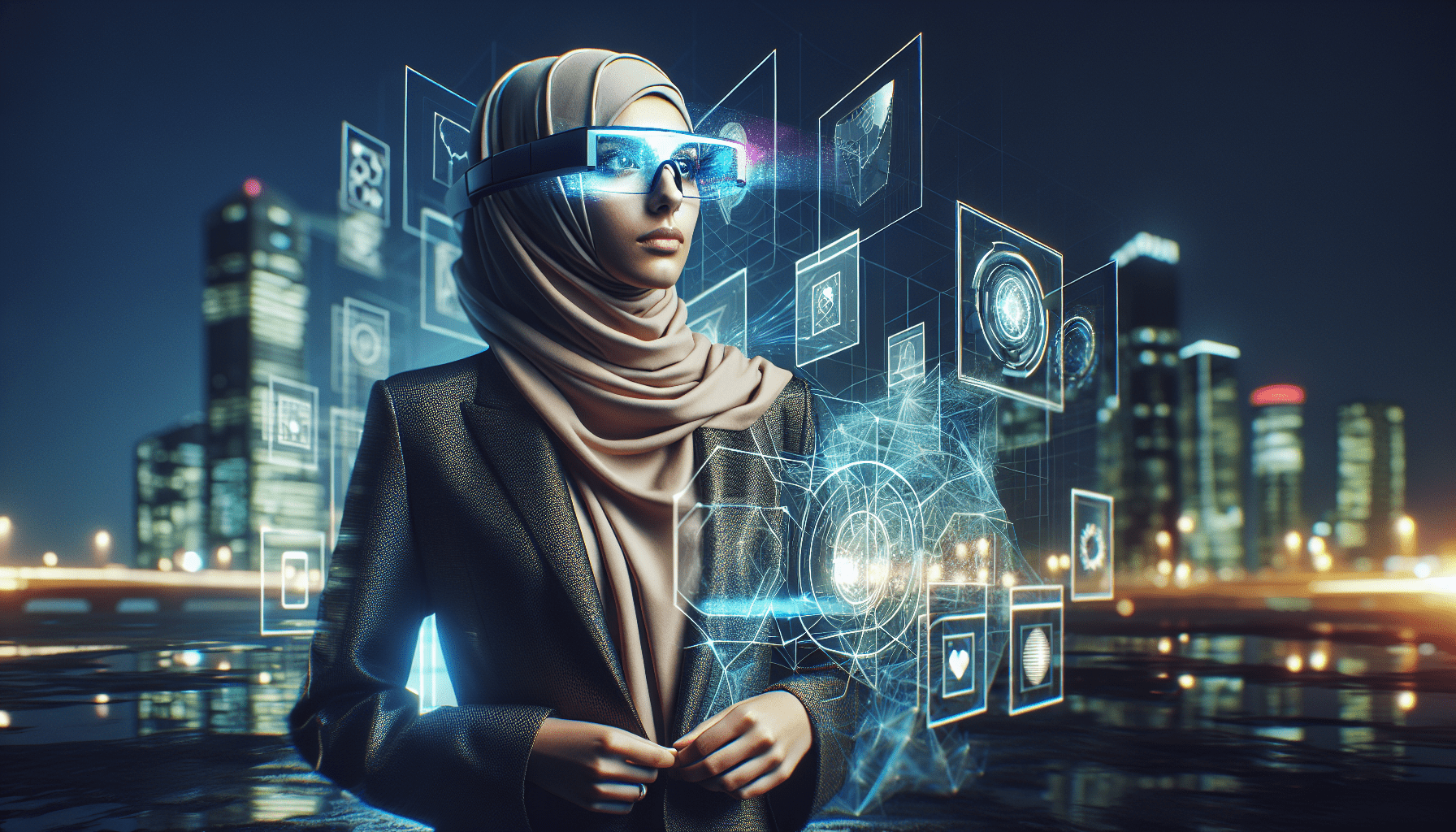Ever wondered how virtual reality (VR) headsets might soon become incredibly more responsive and intuitive? A groundbreaking eye-tracking method called deflectometry could be the key. It’s poised to dramatically improve VR accuracy. Let’s explore how this cutting-edge technology works and what it means for the future of VR.
![]()
Anycubic Coupon – $5 off $50+ sitewide with code DIY5OFF
Deflectometry: A New Eye Tracking Method for VR
Imagine a VR headset that understands exactly where you’re looking, making interactions feel natural and seamless. It could revolutionize how you experience virtual worlds. Deflectometry has the potential to do just that.
The Quest for Better Eye Tracking
Eye tracking plays a vital role in making VR and augmented reality (AR) experiences more immersive and responsive. Current methods, however, have limitations. This is where deflectometry comes into play, offering a potentially transformative solution.
University of Arizona’s Breakthrough
Researchers at the University of Arizona have introduced a novel eye-tracking technique based on deflectometry. This method captures significantly more data points on the eye’s surface than traditional infrared emitter methods, promising greater accuracy and precision.
Traditional Methods vs. Deflectometry
| Feature | Traditional Methods (Infrared Emitters) | Deflectometry |
|---|---|---|
| Data Points Captured | Approximately 12 | Over 40,000 (potentially millions) |
| Camera Shots Required | Multiple | Single |
| Accuracy | Lower | Higher |
How Deflectometry Works
The technique uses a screen to project special light patterns onto the eye. Cameras then capture and analyze how these patterns reflect off the eye’s surface. It’s an ingenious way of gathering a wealth of information.
Million-Pixel Light Sources
The system utilizes any of the over a million pixels on the screen as individual point light sources. By analyzing the deformation of the light patterns when they reflect off the eye, a detailed 3D representation is created – this captures information from both the cornea and the white area around the pupil.
Accuracy in Human Trials
In human trials, the deflectometry system achieved impressive tracking accuracies, ranging from 0.46 to 0.97 degrees. Tests with an artificial eye model showed even better results, with errors as low as 0.1 degrees. These findings highlight the technology’s potential for precise eye tracking.
Commercial Implementation
The University of Arizona has already filed a patent for this innovative technology and is planning commercial implementation. The research team is also working to integrate additional 3D reconstruction methods and artificial intelligence to further enhance the technique.
The Advantages of Deflectometry
Lead researcher Florian Willomitzer emphasizes the key advantage of deflectometry stating: “With our deflectometry-based method, we can use the information from more than 40,000 surface points, theoretically even millions, all extracted from only one single, instantaneous camera image.”
Postdoctoral researcher Jiazhang Wang adds that, “More data points provide more information that can be potentially used to significantly increase the accuracy of the gaze direction estimation. This is critical, for instance, to enable next-generation applications in virtual reality.” The more data points, the more accurate the gaze direction estimation, which is critical for VR applications.
The Importance of Eye Tracking in XR
Eye tracking is very important for the advancement of VR/AR(XR) headsets. It enables realistic avatars with eye contact, and intuitive controls. It can change how you use VR.
Realistic Avatars and Eye Contact
Eye contact is a fundamental aspect of human communication, and accurate eye tracking can bring this element to virtual interactions. Realistic avatars that respond to your gaze can create a more engaging and believable social VR experience.
Intuitive Controls
The Apple Vision Pro uses eye tracking for intuitive controls, allowing users to navigate menus and applications simply by looking at them. This hands-free interaction method offers a new level of convenience and accessibility.
Dynamic Foveated Rendering
Dynamic Foveated Rendering is a technique that allocates computing power based on where the user is looking. By detecting the user’s focus point, the system can render that area in high detail while reducing the quality of peripheral areas.
Improving Graphics Quality
Dynamic Foveated Rendering significantly improves graphics quality. The Playstation VR 2 utilizes this, as well. By focusing processing power on the area you’re looking at, the overall visual experience can be greatly enhanced.
Challenges in Standalone VR Headsets
Integrating eye-tracking into standalone VR headsets like the Meta Quest presents challenges. Meta’s CTO, Andrew Bosworth, notes that accurate eye tracking currently requires more computing power than it saves through foveated rendering.
Meta’s CTO, Andrew Bosworth, explains: “To effectively use Dynamic Foveated Rendering, you need extremely precise eye-tracking. Interestingly, achieving such accurate eye tracking currently requires more computing power than you save through foveated rendering.”
A Potential Breakthrough
The new deflectometry method represents a potential breakthrough, as researchers have demonstrated that accuracy and precision increase with the number of data points collected. If this method can be efficiently implemented, it could lead to more effective eye-tracking that’s economically viable even in mobile VR headsets.
![]()
Anycubic Coupon – $5 off $50+ sitewide with code DIY5OFF
How Will This Affect the VR Landscape?
The introduction of deflectometry could reshape the VR landscape, leading to more immersive, responsive, and accessible experiences. It might affect how VR is adopted and used.
More Effective Eye-Tracking
By capturing significantly more data points on the eye’s surface, deflectometry promises to deliver more accurate and reliable eye-tracking. This advancement can lead to better foveated rendering, more natural social interactions, and more intuitive controls.
Economically Viable Mobile VR Headsets
The potential for efficient implementation makes deflectometry economically viable for mobile VR headsets. This could pave the way for wider adoption of eye-tracking technology in more affordable and accessible VR devices.
The Future of VR
With its potential to enhance accuracy, reduce computing power requirements, and improve overall user experience, deflectometry could play a pivotal role in shaping the future of VR technology. The possibilities are vast and continue to be innovated on.
Deflectometry vs. Traditional Eye Tracking Technologies
Delving deeper into deflectometry and comparing it with existing eye-tracking technologies provides a clearer understanding of its potential impact. It’s important to consider the differences in approach and results.
Technical Comparison
Deflectometry stands out due to its unique approach of using projected light patterns and analyzing their reflections. Other methods rely on infrared emitters and sensors to track eye movements. It’s a difference of approach that enables new results.
Accuracy and Precision
The sheer volume of data points captured by deflectometry — over 40,000 compared to approximately 12 with traditional methods — translates to greater accuracy and precision. This difference is crucial for applications like foveated rendering and gaze-based interaction.
Computing Power
While traditional eye-tracking methods can be computationally demanding, deflectometry’s potential for efficient implementation could reduce the computing power required for accurate eye tracking. This is a significant advantage for mobile VR headsets.
| Technical Aspect | Deflectometry | Traditional Eye Tracking |
|---|---|---|
| Light Source | Projected light patterns | Infrared emitters |
| Data Points Captured | Over 40,000 | Approximately 12 |
| Accuracy | Higher | Lower |
| Computing Power | Potentially lower with efficient implementation | Higher |
Potential Limitations
While deflectometry shows great promise, it is essential to acknowledge that it may have limitations. These limitations may include sensitivity to ambient light and the need for precise calibration. Further research and development are needed to address these potential drawbacks.
![]()
Impact on Various Industries
The improved accuracy of deflectometry-based eye tracking has far-reaching implications across industries. In the automotive industry, driver monitoring systems could use more precise eye tracking to detect fatigue or distraction, increasing safety.
Gaming and Entertainment
The gaming and entertainment industries stand to gain significantly from deflectometry. Imagine playing a VR game where your gaze controls the action, or watching a movie where the narrative adapts to your eye movements.
Healthcare Applications
Healthcare professionals could use eye tracking to diagnose neurological disorders or assess cognitive function. Patients with disabilities could also benefit from eye-controlled interfaces, enabling them to interact with computers and assistive devices.
Education and Training
In education and training, eye tracking can provide valuable insights into student attention and comprehension. Educators can use this data to tailor their teaching methods and create more engaging learning experiences.
Retail and Advertising
Retailers and advertisers can use eye tracking to understand consumer behavior, optimize product placement, and create more effective advertising campaigns. By analyzing where people look, businesses can gain valuable insights into their preferences and decision-making processes.
Future Developments
As promising as deflectometry is, ongoing research and development are essential to fully realize its potential. What are some of the future trends that might come of this research?
Integration of AI
Integrating artificial intelligence (AI) with deflectometry could further enhance its accuracy and efficiency. AI algorithms can analyze the vast amounts of data captured by the system, identify patterns, and improve the precision of gaze estimation.
Miniaturization
For deflectometry to become widely adopted in mobile VR headsets, miniaturization is crucial. Researchers are working on developing smaller, more compact components that can be seamlessly integrated into lightweight and comfortable headsets.
Overcoming Limitations
Addressing potential limitations, such as sensitivity to ambient light and the need for precise calibration, is an ongoing effort. Advanced algorithms and improved hardware designs can help mitigate these issues and make deflectometry more robust and reliable.
Additional 3D Reconstruction Methods
The research team is also working to integrate additional 3D reconstruction methods, which will help create even more accurate and detailed models of the eye. This, combined with the use of AI, will help pave the way for greater accuracy and efficiency.
Potential Commercial Products
The commercial potential of deflectometry is vast, with numerous product applications across various industries. What are some everyday products that might benefit from the technology?
VR Headsets
VR gaming could become more intuitive with eye tracking, and could lead to more virtual socialization, leading to the potential to be more engaging and believable social VR experiences. Deflectometry could be integrated into headsets to enhance the accuracy of eye tracking, enabling the full potential of foveated rendering, gaze-based interaction, and realistic avatar communication.
AR Glasses
With deflectometry, AR glasses can also have the potential to offer hands-free control, seamless integration with other devices, and new ways to share and collaborate. With deflectometry, AR glasses could provide precise tracking, making AR experiences more immersive and useful.
Automotive Driver Monitoring Systems
Automotive driver monitoring systems could use precise eye tracking to detect fatigue or distraction, thus increasing safety. Deflectometry could provide the accuracy needed to reliably monitor a driver’s gaze and attention, reducing the likelihood of accidents.
Medical Diagnostic Tools
Ophthalmologists and neurologists can use medical diagnostic tools to monitor eye movement for signs of neurological disorders or assess cognitive function. Deflectometry could offer a non-invasive and accurate way to gather detailed information about eye movements, aiding in diagnosis and treatment planning.
The Path Forward
The journey from the laboratory to widespread commercial adoption will require further research, development, and collaboration. What are some potential steps in the near future?
Continued Research and Development
Researchers will continue to refine deflectometry technology, focusing on improving accuracy, reducing computing power requirements, and addressing potential limitations. They’ll innovate and come up with new, creative ways to go about this VR eye-tracking technology.
Industry Partnerships
Collaboration between universities, technology companies, and VR headset manufacturers is essential for bringing deflectometry to market. Sharing expertise and resources can accelerate the development process and ensure that the technology meets the needs of end-users.
Standardization
Standardizing eye-tracking protocols and interfaces can facilitate integration into various VR and AR platforms. This is not only for easy integration, but also for efficient updates when they’re released. Consistent standards would enable developers to create applications that work seamlessly across different devices.
Data Privacy Considerations
As with any technology that involves collecting personal data, addressing privacy concerns is paramount. Ensuring that eye-tracking data is used responsibly and ethically is essential for gaining public trust and promoting widespread adoption.
Anycubic Coupon – $5 off $50+ sitewide with code DIY5OFF




